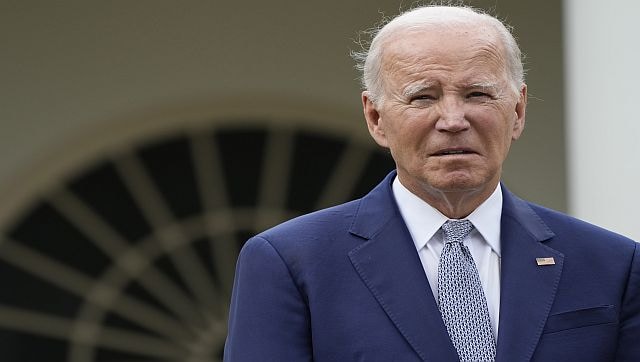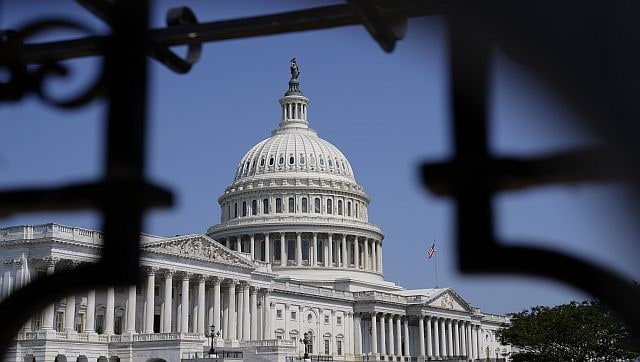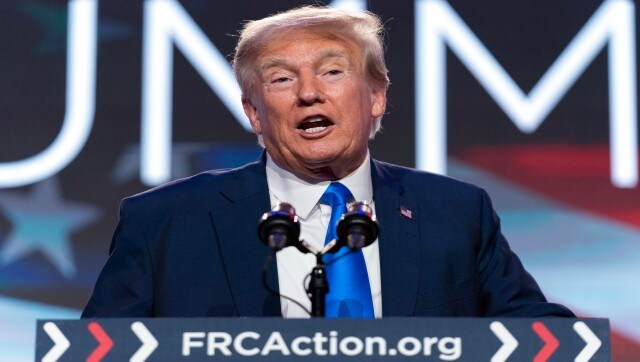The US Congress seems to be on the verge of yet another shutdown – the fourth partial government shutdown in a decade. The development comes as far-right Republicans in Congress, urged on by former president Donald Trump, seem determined to have a confrontation over an old right-wing bugbear – government spending. The shutdown, which would take effect on Sunday, 1 October, also comes in the backdrop of some House Republicans eyeing Speaker Kevin McCarthy’s gavel for themselves. But is a shutdown really imminent? And why does this keep happening? Let’s take a closer look: Is a shutdown really imminent? The White House certainly thinks it is a real possibility. While President Joe Biden has said a shutdown is not ‘inevitable’, the White House has been quietly preparing its own employees for the possibility. As per CNN, the White House has been making arrangements for many junior personnel slated to be furloughed. Inside the White House, senior staff are also being given training on how send out press releases or update the website – duties that would usually be performed by junior aides. Washington Post quoted Michael Linden, a former top official at the White House Office of Management and Budget, as putting “the chances of a shutdown are much higher” compared to previous battles over spending. [caption id=“attachment_13164982” align=“alignnone” width=“640”] While President Joe Biden has said a shutdown is not ‘inevitable’, the White House is preparing its staff and federal workers. AP[/caption] “If you’re 48 hours out from a potential shutdown, but it’s very clear there’s a [deal] on its path, then you might not do that,” he said. “But if there isn’t, you are going to have to tell agencies to tell their teams, so people can start to plan.”
While President Joe Biden has said a shutdown is not ‘inevitable’, the White House is preparing its staff and federal workers. AP[/caption] “If you’re 48 hours out from a potential shutdown, but it’s very clear there’s a [deal] on its path, then you might not do that,” he said. “But if there isn’t, you are going to have to tell agencies to tell their teams, so people can start to plan.”
Congress, meanwhile, seems to be operating on two distinctly different tracks.
The Senate, currently led by Democrats, is eying a bipartisan package to keep the lights on – at least until a broader agreement can be reached. The Senate voted to open debate on a stopgap measure, known as a continuing resolution or CR, on Thursday by a vote of 76 to 22. The CR would extend federal spending until 17 November and authorise roughly $6 billion each for domestic disaster response funding and aid to Ukraine to defend itself against Russia. The 79-page Senate bill would fund the government at current levels and would include the Ukraine and U.S. disaster aid that has been in jeopardy. It also includes an extension of Federal Aviation Administration provisions expiring Saturday. Senate Majority Leader Chuck Schumer said the Senate bill shows “bipartisanship can triumph over extremism.” Schumer said, “We all know together that a government shutdown will be devastating, devastating to this country.” Senate Republican leader Mitch McConnell appeared on board with the bipartisan Senate plan, saying, “Government shutdowns are bad news.” But the Senate measure has already been rejected by Republicans in the House. The House, controlled by Republicans, meanwhile, has taken up voting on partisan Republican spending bills that stand no real chance of becoming law. The House of Representatives passed three of four bills funding parts of the government, though the partisan bills would not alone prevent a shutdown, even if they could overcome strong opposition from Senate Democrats and become law.
With days remaining before a federal closure, the stakes are rising with no resolution at hand.
The divergent paths of the two chambers increased the odds that federal agencies will run out of money on Sunday, furloughing hundreds of thousands of federal workers and halting a wide range of services from economic data releases to nutrition benefits. Government funding expires 1 October, the start of the federal budget year. A shutdown will effectively begin at 12:01 am Sunday if Congress is unable to pass a funding plan that the president signs into law. Why does this keep happening? First, let’s briefly examine how the government is funded. Congress usually negotiates 12 bills that fund the government.
This is a historically laborious undertaking that isn’t resolved until December, at the earliest.
In the meantime, Congress relies on a CR to provide stopgap money to open government offices at current levels as budget talks are underway. Money for pressing national priorities, such as emergency assistance for victims of natural disasters, is often attached to a short-term bill. This would be the 11th US shutdown since 1980, as per Bloomberg. Shutdowns themselves occur for a host of reasons – but budget cuts and ideology are usually top of the heap. Since 1976, there have been 22 funding gaps, with 10 of them leading to workers being furloughed. But most of the significant shutdowns have taken place since Bill Clinton’s presidency, when then-Speaker Newt Gingrich and his conservative House majority demanded budget cuts. The longest government shutdown happened between 2018 and 2019 when then-President Trump and congressional Democrats entered a standoff over his demand for funding for a border wall. [caption id=“attachment_12630182” align=“alignnone” width=“640”] Experts blame a host of issues including growing partisanship for the regular threats of shutdown. AP[/caption] The disruption lasted 35 days, through the holiday season, but was also only a partial government shutdown because Congress had passed some appropriations bills to fund parts of the government. This time, House Republicans driven by a faction of hardline conservatives are attempting to undo the spending deal McCarthy reached with Biden in May. The deal – which included $1.59 trillion in discretionary spending in fiscal 2024 – was seen as a victory for the president and, even more importantly, a defeat for the House Speaker by the more extreme chambers of his party.
Experts blame a host of issues including growing partisanship for the regular threats of shutdown. AP[/caption] The disruption lasted 35 days, through the holiday season, but was also only a partial government shutdown because Congress had passed some appropriations bills to fund parts of the government. This time, House Republicans driven by a faction of hardline conservatives are attempting to undo the spending deal McCarthy reached with Biden in May. The deal – which included $1.59 trillion in discretionary spending in fiscal 2024 – was seen as a victory for the president and, even more importantly, a defeat for the House Speaker by the more extreme chambers of his party.
A piece in Vox blamed recent shutdowns on growing partisanship in Congress.
“That fact has also made it more difficult to pass spending legislation, and not just because lawmakers want to make political stands. Because polarization has led to lawmakers approving fewer bills overall, spending legislation is also often used to address other policy issues, which can make these measures more contentious,” the piece noted. The piece also took Congress’ fondness for delays to task as being the reason for why these important bills are being voted on as the shutdown deadline comes closer and closer. “As Congress has consolidated more of its legislative work into fewer large, must-pass bills, those bills bear more of Congress’s political conflicts,” Molly Reynolds, a senior fellow of governance studies at the Brookings Institution, previously told Vox. This time, House Republicans are demanding another $120 billion in cuts in attempt to claw back Biden’s perceived victory over McCarthy. They also want tougher legislation to halt the flow of immigrants at the US southern border with Mexico. The speaker has given the holdouts many of their demands, but it still has not been enough as they press for more — including gutting funding for Ukraine, which Ukrainian president Volodymyr Zelenskyy told Washington last week is vital to winning the war against Russia. While their numbers are just a handful, the hard-right Republican faction holds sway because the House majority is narrow and McCarthy needs almost every vote from his side for partisan bills without Democratic support. Former president Donald Trump has taken to social media to egg his congressional allies toward a shutdown. [caption id=“attachment_13133862” align=“alignnone” width=“640”] Former president Donald Trump has been egging on his far-right allies in the House to produce a government shutdown. AP[/caption] The funding fight focuses on a relatively small slice of the $6.4 trillion US budget for this fiscal year. Lawmakers are not considering cuts to popular benefit programs such as Social Security and Medicare.
Former president Donald Trump has been egging on his far-right allies in the House to produce a government shutdown. AP[/caption] The funding fight focuses on a relatively small slice of the $6.4 trillion US budget for this fiscal year. Lawmakers are not considering cuts to popular benefit programs such as Social Security and Medicare.
McCarthy is facing intense pressure from his caucus to cut spending and achieve other conservative priorities.
Impact Shorts
View AllSeveral hardliners have threatened to oust him from his leadership role if he passes a spending bill that requires any Democratic votes to pass. Republican Representative Matt Gaetz of Florida, a key Trump ally leading the right flank, said on Fox News a shutdown is not optimal but “it’s better than continuing on the current path that we are to America’s financial ruin.” McCarthy, for his part, suggested on Thursday that a shutdown could be avoided if Senate Democrats agreed to address border issues in their stopgap measure. “I talked this morning to some Democratic senators over there that are more aligned with what we want to do. They want to do something about the border,” McCarthy told reporters in the U.S. Capitol. “We’re trying to work to see, could we put some border provisions in that current Senate bill that would actually make things a lot better,” he said. Credit agencies have warned that brinkmanship and political polarization are harming the US financial outlook. Moody’s, the last major ratings agency to rate the US government “Aaa” with a stable outlook, said on Monday that a shutdown would harm the country’s credit rating. Fitch, another major ratings agency, already downgraded the US government to “AA+” after Congress flirted with defaulting on the nation’s debt earlier this year. The White House, no doubt aware of the truly pathetic record of shutdown proponents – currently O for 10 since 1980 – seems in no hurry to solve Speaker McCarthy’s problems with his base for him. Biden is putting the pressure back on House Republicans. NBC quoted Biden as telling House Republicans to “do their job” and “fund the government.” “A deal is a deal,” said White House press secretary Karine Jean-Pierre. “This is for them to fix.” With inputs from agencies
)